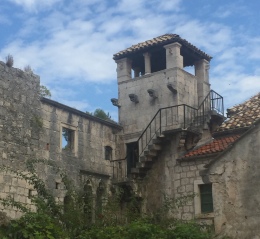
The Netflix series “Marco Polo” has rekindled my memories about my own adventures in China. We have been taught that the Polo family was from Venice. So when I lived in Croatia and found their claim to Polo’s home in Korcula, I became interested in his travels and the parallel to my own.
Much of the perspective we “Westerners” have about historic 13th century China (and the expanse of that portion of the known world at that time) is through Polo’s eyes as documented in “Travels of Marco Polo.” Through my eyes, I have observed many interesting places and things in today’s China near the Silk Road and the Yangtze River. This story is about my adventures there.
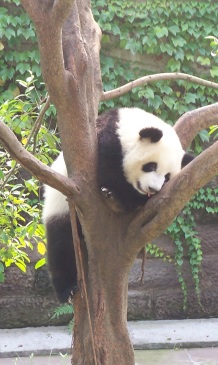
Polo was one of the first Europeans to travel to Asia. His experiences in China and trade between China and the west inspired other explorers such as Columbus. I recall thinking that Polo made his dangerous journeys by foot, traveling years, and mine was in comfort in hours to this place where customs and traditions are closely protected.
While exploring the narrow hutongs (alleys) in the cramped old neighborhoods in Beijing, I felt a bit like I was continuing Polo’s explorations at the court of the Kubli Khan.
Someday I will write another story about eating Peking duck, other delicacies, and what I saw in and around Beijing including the Forbidden City, Tiananmen Square and the tremendous Great Wall. Although exploring the city was wonderful, the slower pace on my journey up the Yangtze River on a riverboat was a welcome relief from the bustle and masses of humanity found in Beijing.
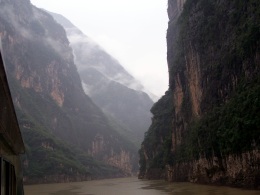
The Yangtze is one of the longest rivers in the world and almost a third of all Chinese people live near it. The river is a vital commerce link today just as it was in Polo’s time. In my travels I only visited a small portion near the center of the “Great River.”
Traditional rural Chinese survive as farmers and fishermen on the Yangtze. And growing-China is on display in the enormous modern cities near the river and at the Three Gorges Dam at Yichang, the largest hydroelectric dam in the world, with its huge locks for boats.
Along the Yangtze were several engaging stops of which I only document a few here. But prior to doing so, I will comment about some of the Chinese cuisine. One must remember that there is a huge population in China and that feeding them is a very high priority. Anything edible is found in menus including delicacies such as eel and deep-fried grasshoppers on a stick. I ate several things and have no idea what some were. Traditional Chinese food tastes similar but is distinctively different from the Chinese food we westerners are accustomed to consuming. There is a significant use of spices.

Another of my observations was in the “Ghost City” Fengdu. Going to the toilet involved squatting over a hole in the cement outside. There were a few doorless partitions and no designation of toilets for men or women. And one hoped to have brought their own toilet paper! When finished, a woman with a hose came by to complete the flush!
Fengdu’s temples and shrines have a distinctive emphasis on afterlife punishment for sins. Here is where the tour group met the “ghosts” (like the one pictured) lining the temple pathway. There are several of these ugly, terrifying statues at the shrine.
The legend is that two imperial officials once visited the city to practice their Taoism religious beliefs and there became immortal. But a combination of their names (for some unknown reason) became Yinwang meaning “King of Hell” and ever since the site has had a focus on hell. Several pieces of artwork including the “ghosts” at the shrines depict torture and punishment in hell.
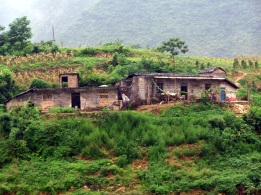 Living conditions along the Yangtze vary. The cities are modern and colorful along the section of the Yangtze of our travels. There are many cars. In the rural areas, homes (like the one pictured) are minimum essential for survival. The river provides the source for sustaining life for the Chinese living outside the cities.
Living conditions along the Yangtze vary. The cities are modern and colorful along the section of the Yangtze of our travels. There are many cars. In the rural areas, homes (like the one pictured) are minimum essential for survival. The river provides the source for sustaining life for the Chinese living outside the cities.
Chongqing in Polo’s times was one of the stops on the Silk Road. It is located at the intersection of the Jialing and Yangtze Rivers. It was here in a zoological habitat that giant Pandas are found. The pandas do nothing special but lumber by, eat or relax in trees while providing great opportunities for people taking photos. From this zoo Pandas find homes on loan elsewhere throughout the world.
Chongqing was the tour’s dropping off point from the Yangtze to go to Xi’an, one of the Silk Road’s eastern ends. The famous terracotta warriors and horses, a UNESCO World Heritage Site, are found at Xi’an. This is a very interesting place which likely was under-foot in Polo’s time in the 13th century.
There are theories why this intricate clay army of soldiers and horses are here but likely it is associated with accompanying the “First Emperor of Qin” into the afterlife. Qin lived before 200 BC and his mausoleum is located here. The faces on the soldiers are said to depict those of their creators. Although gray today, when the warriors were made, they were painted consistent with colorful military garb.
I found it curious outside the Terracotta Warriors visitor center that the tour guide reminded us to not purchase the miniature replicas of the warriors from vendors in the parking lot because they are not the “real replicas.” Real replicas, it seems, are found only in the visitor center and the half price ones outside are said to be “knock-offs.” Imagine that for a moment… they are knock-offs of knock-offs!
I enjoyed my exploration in the footsteps of Marco Polo more than I anticipated. But after eating Chinese food at every meal, I was looking forward to my arrival in Hong Kong. There the first order of business was to find Hard Rock Cafe for a juicy American hamburger!
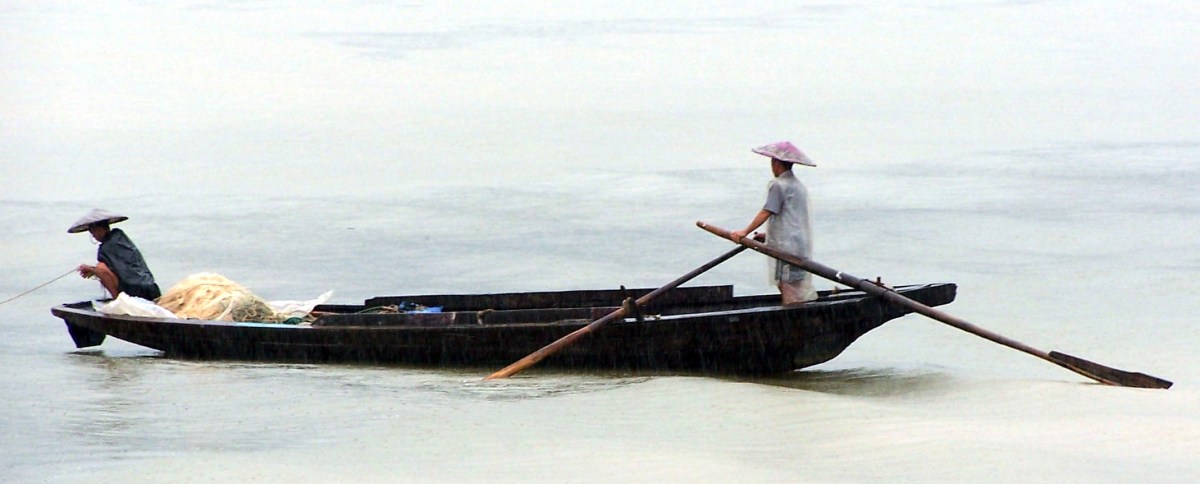


Beautiful!
LikeLike
This is a wonderful description of your travels in China. The landscape is amazing as are the man made sites such as the Terracotta Warriors. It’s incredible that people can live is such squalor and survive. Polo’s history is very interesting. And your blog reminds us that today’s China, in some ways, hasn’t changed much from times past.
LikeLiked by 1 person
Thanks. What other experiences and memories stand out from visiting China?
LikeLike
Barry, I didn’t know that you’d been in China… It is an interesting place!! I (Cindy and I) was there for the first time in 1985… What a HUGE difference when we (Barry and I) went back in 2001!! And now of course since we’ve been there many times… to all the locations you’ve mentioned and in Beijing 5 summers, teaching at a university in Beijing. It’s so different at the various places. As we say, (probably) anything you hear about China is true…some place!! Having a Chinese professor and her daughter living with us for 6 months was also a fascinating experience!! And she was a wonderful (authentic) Chinese cook and taught me a lot! Jean
LikeLike
Interesting read! China (except for HK and Macau) is still a blank space in my travel map… Btw I had a fantastic time in Brno 😉
LikeLike
I saw your photo on FB. Glad you enjoyed Brno!
LikeLike